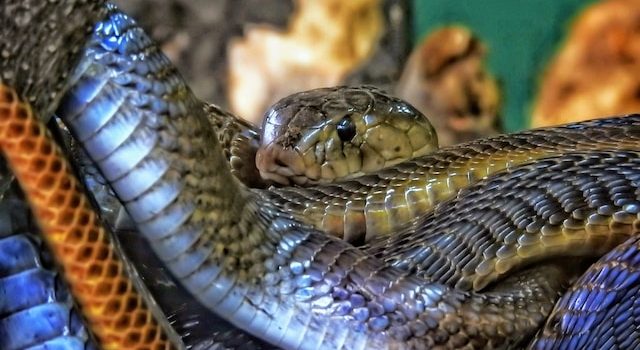
Giant snakes, with their imposing size and insatiable appetite, have long fascinated both scientists and enthusiasts alike. But what exactly do these serpentine giants feast upon, and how do they hunt their prey? In this article, we delve into the intriguing world of the diet of giant snakes, shedding light on their eating habits and hunting strategies.
- Carnivorous Predators: Giant snakes are formidable carnivorous predators, relying solely on a diet of meat to sustain themselves. Their feeding habits vary depending on the species and their natural environment. While the specific prey preferences may differ, the fundamental nature of these majestic reptiles remains consistent—they are apex predators in their respective habitats.
- Ambush Predation: One of the most common hunting techniques employed by giant snakes is ambush predation. They possess remarkable patience and stealth, lying in wait for unsuspecting prey to come within striking range. This strategy involves blending into their surroundings, such as tall grass or dense foliage, to remain concealed until an opportune moment presents itself. With their lightning-fast reflexes, they seize their prey with precision and overpower it through constriction.
- Constricting Prey: Constriction is a defining characteristic of giant snakes. Once they have seized their prey, they wrap their powerful bodies around it, exerting immense pressure to suffocate and immobilize their target. This method effectively restricts the prey’s ability to breathe, leading to its eventual demise. Contrary to popular belief, giant snakes do not dislocate their jaws to swallow their prey whole but rather stretch their highly flexible jaws to accommodate the food.
- Varied Prey Choices: Giant snakes display a diverse range of prey choices, reflecting their adaptability to different ecosystems. For instance, the reticulated python, the longest snake species, has been known to prey upon mammals, such as deer and pigs, in addition to birds and reptiles. The green anaconda, on the other hand, primarily targets aquatic creatures like fish, turtles, and even caimans. Burmese pythons have been observed consuming small to medium-sized mammals, including rats, rabbits, and even deer.
- Feeding Challenges and Feats: Feeding on large prey presents unique challenges for giant snakes. After a successful hunt, they must consume their meal whole, relying on their elastic jaws and expandable stomachs to accommodate the substantial food item. The digestion process can take several days or even weeks, depending on the size of the prey and the metabolic rate of the snake. During this period, they remain relatively inactive, allowing their bodies to focus on breaking down and absorbing the nutrients.
- Ecological Importance: Understanding the diet and hunting behavior of giant snakes contributes to our understanding of the delicate balance within ecosystems. They play a vital role in controlling prey populations and influencing the dynamics of their habitats. Their presence can have cascading effects on the abundance and distribution of other species, making them key players in maintaining ecological equilibrium.
In conclusion, the diet of giant snakes unveils a world of fierce predators and remarkable hunting strategies. Through ambush predation and constriction, these serpentine giants secure their meals with precision and efficiency. Their diverse prey choices reflect their adaptability to different environments, and their feeding habits play a crucial role in the intricate web of life. By studying and appreciating the diet of giant snakes, we gain insights into the fascinating dynamics of our natural world.










